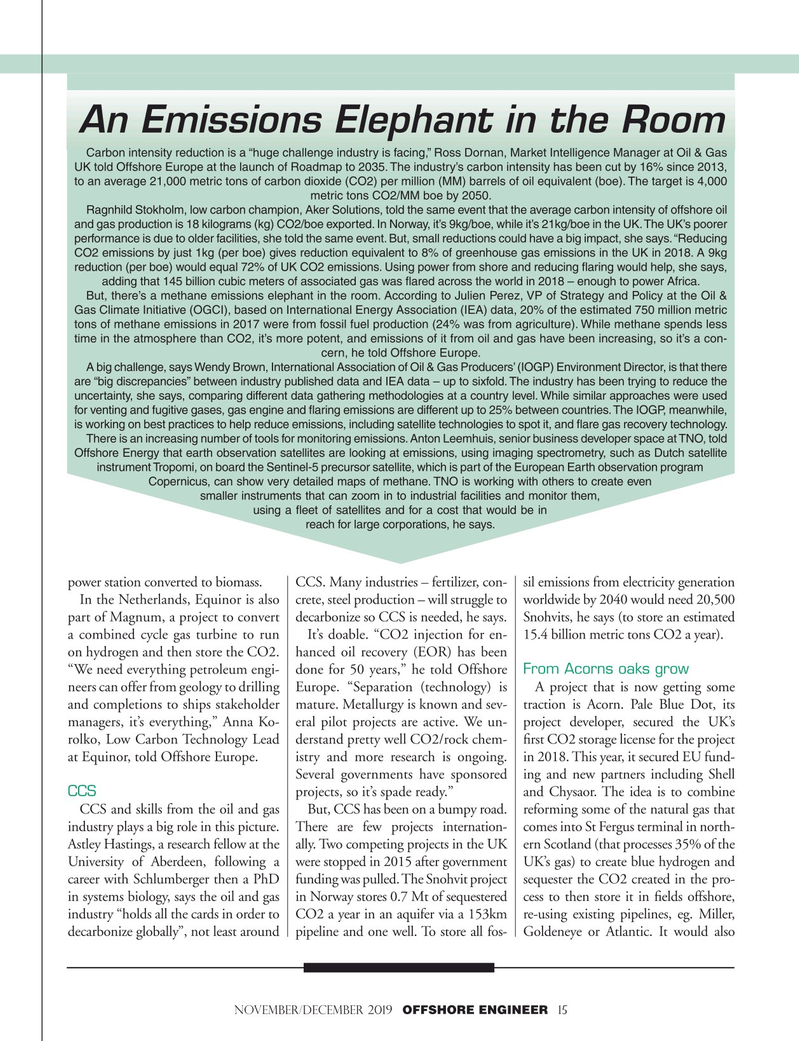
Page 15: of Offshore Engineer Magazine (Nov/Dec 2019)
Exploration Outlook
Read this page in Pdf, Flash or Html5 edition of Nov/Dec 2019 Offshore Engineer Magazine
An Emissions Elephant in the Room
Carbon intensity reduction is a “huge challenge industry is facing,” Ross Dornan, Market Intelligence Manager at Oil & Gas
UK told Offshore Europe at the launch of Roadmap to 2035. The industry’s carbon intensity has been cut by 16% since 2013, to an average 21,000 metric tons of carbon dioxide (CO2) per million (MM) barrels of oil equivalent (boe). The target is 4,000 metric tons CO2/MM boe by 2050.
Ragnhild Stokholm, low carbon champion, Aker Solutions, told the same event that the average carbon intensity of offshore oil and gas production is 18 kilograms (kg) CO2/boe exported. In Norway, it’s 9kg/boe, while it’s 21kg/boe in the UK. The UK’s poorer performance is due to older facilities, she told the same event. But, small reductions could have a big impact, she says. “Reducing
CO2 emissions by just 1kg (per boe) gives reduction equivalent to 8% of greenhouse gas emissions in the UK in 2018. A 9kg reduction (per boe) would equal 72% of UK CO2 emissions. Using power from shore and reducing

 14
14

 16
16